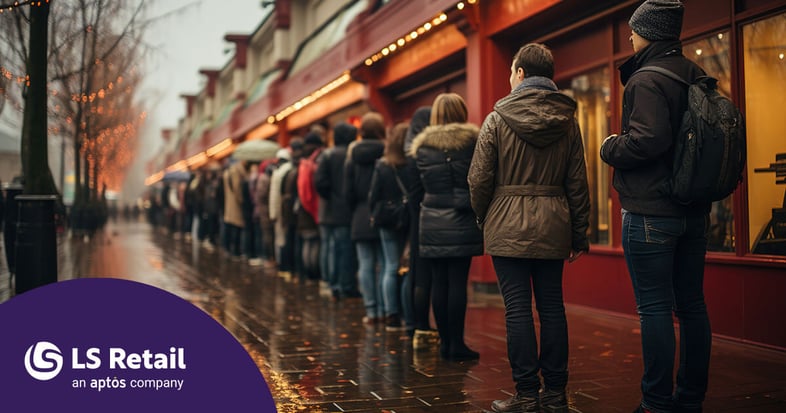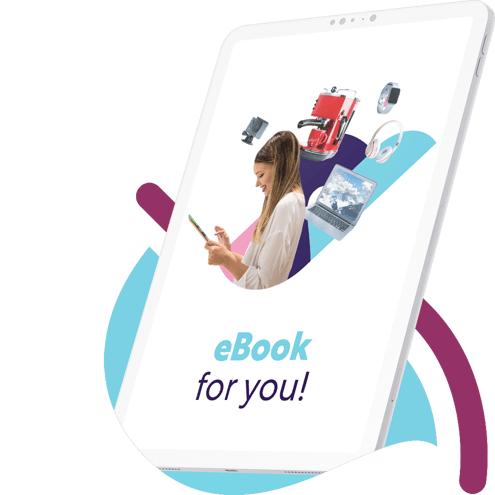8 simple ways to reduce queues in your retail store

1. Introduce alternative checkout options:
- Utilize advanced POS software that can be operated on tablets or smartphones, allowing you the flexibility to incorporate mobile Point of Sale (mPOS) devices whenever necessary – and easily store them away during quieter periods. Accept card payments on the spot, eliminating the need for long lines at the register. Additionally, enhance customer service, such as checking item descriptions or availability anywhere on the shop floor.
- Offer self scanning apps like ScanPayGo to let customers shop independently.
- Offer self-checkout technology: enhance the checkout experience for your customers and give them flexible checkout options, ensuring that your data remains consistent across your Point of Sale (POS) and Enterprise Resource Planning (ERP) systems.
2. Add special stations for complex processes
Simple sales are usually quick to process at the register. A line of customers who are all just buying items usually flows rapidly. On the other hand, more complex processes - for example, item exchanges, custom orders or signing a shopper up for a loyalty card - can take a lot of time, and slow down the line significantly. As simple sales are more common than complex ones, you can reduce the average waiting time for most customers by creating special service stations for shoppers who need extra help – for example, those who need refunds, exchanges, special orders and more.3. Select an intuitive POS system
If your checkout system is complex to learn and unintuitive to use, expect flustered employees, frustrated consumers, and long lines in your store. There is a supermarket chain I avoid on weekends because the (usually very young) staff has to use a booklet with codes to register items without a barcode. A cartful of different types of vegetables can take a long time to process at the register, as the cashier must first try to figure out what item he is dealing with in the plastic bag, and then has to find the corresponding code in the booklet. And if he gets it wrong, guess what? Oh yes – he has to ring for a manager. By choosing a Point of Sale system that is quick to learn and has a user-friendly interface, you can speed up operations at the till, and at the same time also cut on training times (a great plus, especially if staff turnover is high in your store). Discover the key features you should look for in a retail Point of Sale, and select software that will support your business4. Have a single line with multiple servers
Why is it that the other line at the register always seems to be moving faster? Everyone left and right is checking out and leaving, while you are stuck in line at the one register where the system is not working, a confused customer “could swear the purse was in here” or the cashier has gone to look for a manager. To avoid this frustrating situation, some retailers have implemented multiple-server waiting lines: customers stand in a single waiting line, and when it’s their turn, they go to the first free cashier. There are several advantages to a single line: first, no server is idle while there are still waiting shoppers; secondly, the waiting time is similar for all customers, even if one register for any reason gets stuck; finally, a single line feels “fairer” to people in line, as customers can be sure that they will all be served in the order of arrival.5. Get technology you can rely on
When considering new software, prioritize systems known for their reliability and efficient transaction times. You definitely don't want to risk creating long queues and losing customers due to technical glitches or the dreaded "computer freeze." We heard a particularly harrowing story from one of our clients who experienced a complete breakdown of their previous point of sale system on Christmas Eve. "It was a nightmare," they shared. "One of our cash registers malfunctioned, causing a domino effect that brought down all the systems in our main store. The lines wrapped around the building as we had to manually process every transaction by hand. We lost a staggering $20,000 that day, and who knows the long-term impact it had on customer loyalty." Their conclusion? "Reliability is the most crucial factor when selecting a system." The company now happily uses LS Central.6. Experiment with virtual queues
Virtual queues allow customers to secure a place in a queue without actually having to stand in line – for example, by taking a number, or a ticket with an appointment time (in this case, the assigned time depends on the number of people ahead). Often used in places like service centers, banks, and amusement parks, virtual queues are however less common at the register. My local electronics store, for example, uses virtual queuing for customers looking for assistance, but relies on traditional lines (which can often get quite long) at the register. Studies show that not having to look at the line decreases people’s annoyance about having to wait. Not having to physically stand in line also means that people are free to wander around, adding items to their cart. Why not use this system also for checkout?7. Cut on security tags
Removing security tags can be time-consuming, and slow down the queue noticeably. Tags are a necessity, but make sure you don’t overuse them. Last year I had to go back to a department store’s register twice because some of the items I had just bought were triple-tagged: although the cashier had already removed one tag, there were a couple more hidden on the item. Needless to say, I was not very happy when the alarm rang as I exited the store – and unhappier yet when it rang a second time. Some stores have also started using clear security tagged boxes for small-sized, high-value items. Although this is a safe way to protect items from theft, these boxes take some time to open at the register. When you place a product in this kind of box, be aware that you may risk discouraging some customers from buying it.8. Make the line feel shorter
Sometimes the best way to speed up a queue is to make it feel shorter. Multiple studies show that how people feel while waiting in line often matters more than the actual duration of the wait. As the environment can change people’s perception of how fast time passes by, here are some great (and popular) ways to make a wait feel shorter:
- Have staff members interact with queuing shoppers: they could, for example, offer a product to try, distribute treats, or ask the customer a question. Personal interaction has been found to help reduce the stress derived from waiting.
- Have entertaining surroundings. This technique is skillfully used in Disney’s amusement park rides, which feature interactive areas, videos, and video gaming stations in areas where people are queuing. Retailers who don’t have the funds or physical space for initiatives on Disney’s scale can still use the idea, for example installing screens with advertisements close to registers, or displaying engaging merchandise (such as novelty items or magazines) in waiting areas.
Long queues may be a good problem to have – after all, it means your store is popular! However, for your customers, long lines mean slow service, boredom, and stressed employees. As shoppers wait impatiently for cashier-less, queue-less stores, you can take a step in the right direction by reducing queuing times using the advice above. If you need help finding the right technology to improve the customer experience in your stores, do not hesitate to contact us.

